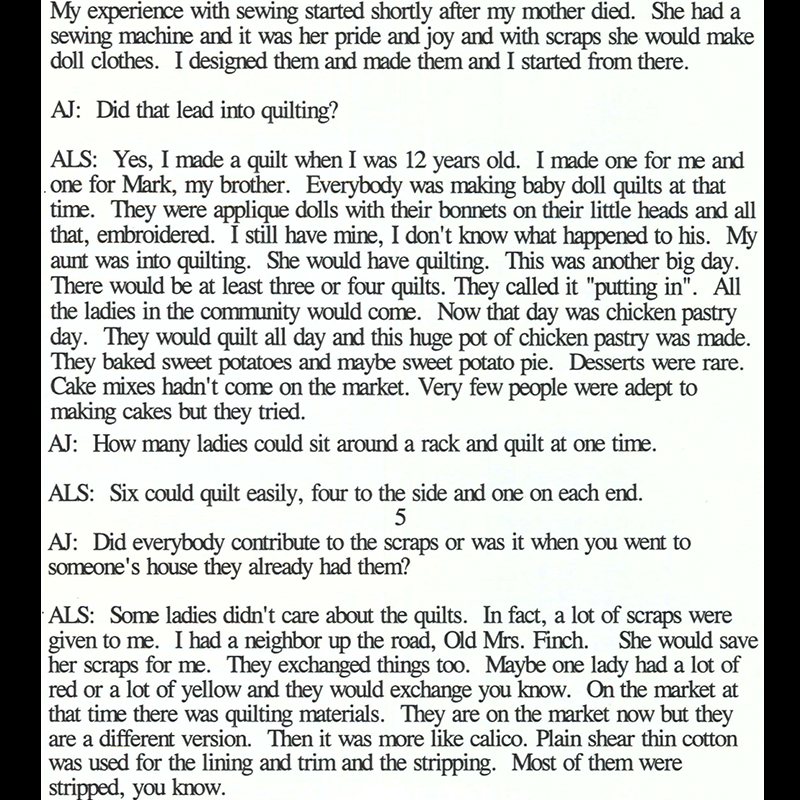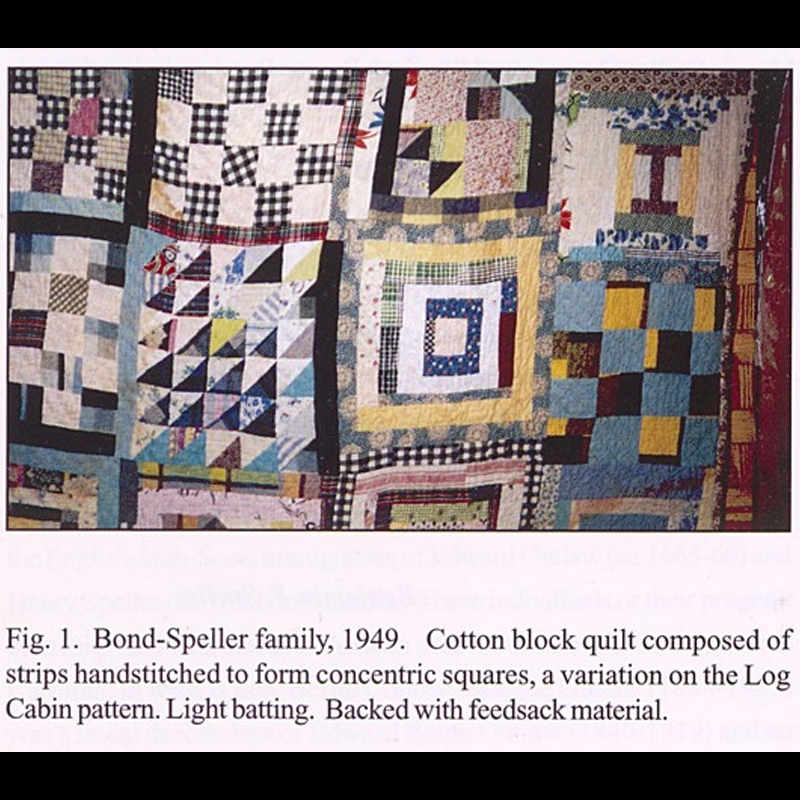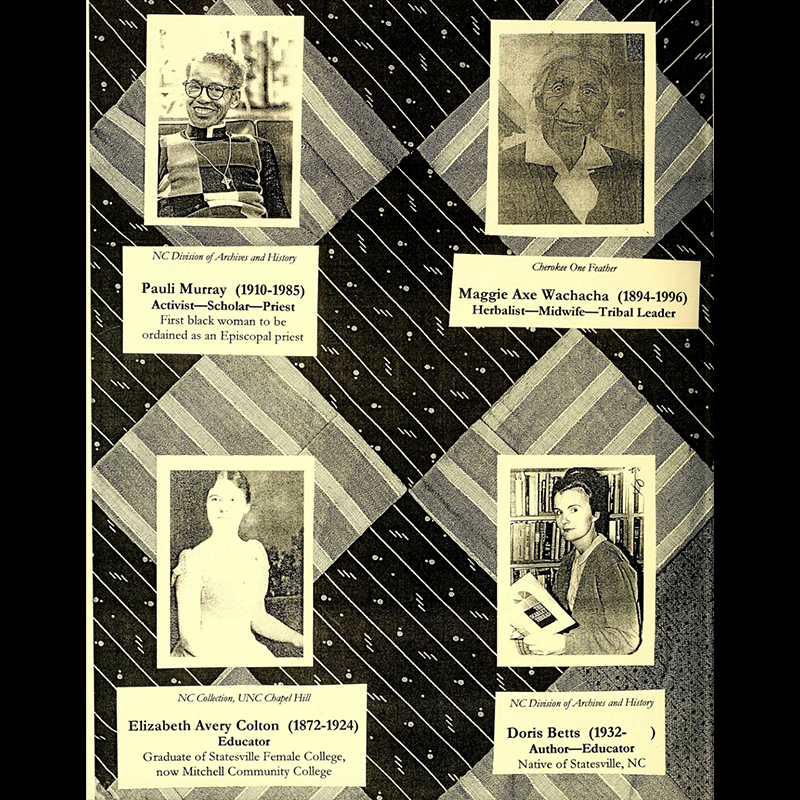
Quilting is the process of creating textile-based materials (e.g. blankets, clothing, etc.) and is distinguished by its use of three layers: a top layer of fabric, some type of internal batting (insulating fibrous material), and a back layer of fabric. Techniques include applique, where fabric designs are stitched onto the top layer of fabric; stitch design, where the three layers are stitched together so that the stitching creates designs on the quilt; and patchwork, where pieces of fabric are stitched together to form the top layer of fabric.
Quilting is a practice of both art and practical skill. Quilts have been used to warm loved ones, display artful technique, and stitch together stories and memories. What we see as an everyday craft uncovers social conditions and lived experiences of those who invested their time into their quilting. This new primary source set aims to provide insight to the experiences of people living in North Carolina, as well as appreciate the craft of quilting in both its artistry and utility. Some of the topics the source set covers is exploring rural life, Black and African American influence, and storytelling through quilts and materials about quilting.
Rural Life

This set contains many quilts and images to examine, but one of the interesting sources is an oral history given by Agnes L. Scott about growing up in rural North Carolina. She shared stories of how quilting played a role in her life and the connections between her and her neighbors due to the practice of quilting. Other sources in the set on rural living share a similar theme of community through quilting.
Black and African American Influence
Here, a quilt created by a member of the Bond-Speller family from Bertie County shows different patterned squares, as well as the influence that Black and African American quilters have had on the practice of quilting. This source and others point out the African influence in American patchwork, specifically regarding color and long, thin strips of patchwork. North Carolina quilts can give plenty of examples of this influence, amongst others.

Storytelling

Many stories are told through quilting, from community connections to what life was like for the quilter who created the piece. Some quilts, however, attempt to share an explicit story through the art of quilting. There are examples in this set, like the portion of a quilt shown on the left, that tell stories about history in North Carolina. For the quilt highlighted here, students created a quilt to share about prominent women and feminists in North Carolina’s history.
There are many aspects about life in North Carolina that can be divulged from the sources found in this set, giving us a glimpse into the everyday of people within the state. This primary source set aims to give information not only about the art and practice of quilting, but the lives and experiences of the quilters themselves. Please enjoy learning more about North Carolina history through quilting, and if you are inspired to join in the long history of quilters in the state, then happy quilting!
